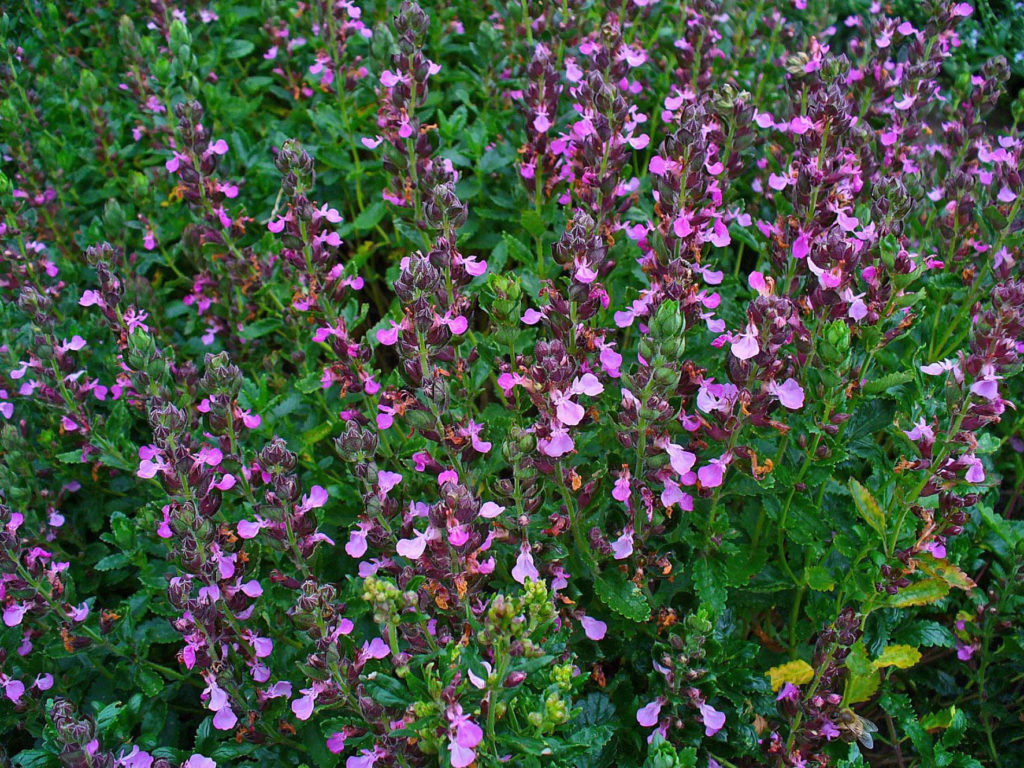
Lately I seem to spend a lot of time asking myself, what else can I plant that the deer will find disgusting? It’s not a typical approach to garden design, but for those of us living in areas where deer are present year-round, it is the only way to enjoy flowers without heartbreak.
Here’s how I found myself in this gardening predicament. Four years ago, we purchased the home we live in today, a process hurried along by a closing which was to take place in less than three weeks, and much to do, including giving notice at my landscaping job in the city. Assessing the probability of deer in the area was the least of my worries. I’m not sure if the deer factor would have changed our decision to live in this charming small town outside of Atlanta, but it certainly has had an impact on my gardening life. And while fencing might seem like the logical solution, it wouldn’t work well on my particular piece of land.
I spent the first two years here telling myself I was going to simplify, take a break, recharge my batteries. I told myself, take it slow, grow some vegetables, don’t get carried away with a bunch of flower beds. I needed time to move existing plants around, have soil tested, figure out where I had pockets of good soil and where I had hard-packed clay, and just get a sense of the place. After a few seasons, I realized that the deer are here full time, and they aren’t timid.
Early on, I planned to grow vegetables in a small, fenced area with raised beds, and today that area includes a few dwarf blueberries, an espaliered peach tree, some of my favorite perennials, and seasonal vegetables. But at year two, I decided that I wanted more flowers. That was the year I started to plant flowering shrubs, focusing mostly on those that are less likely to be bothered by deer, and at year three, I started adding patches of bulbs, such as rain lilies. Now, at year four, I’m ready to look beyond anchor plants and fill in my garden borders, deer or no deer.
I’ve written before about using fishing line, along with granular and spray repellents to keep deer away. Using fishing line, I have been able to successfully change the browsing pattern of deer through the late fall and winter seasons, when they tend to do the most damage at my place. In spring, and for most of the summer, I can often relax a bit, as there is plenty for them to eat elsewhere. I have done a good job of planting mostly those ornamental and evergreen shrubs that the deer will leave alone, but now I want the icing on the cake.
These days I’m leaning toward anything in the herb category, and these are plants I’ve not paid a great deal of attention to because they aren’t that showy. I am learning to appreciate this plant group, in the same way I learned to appreciate shade plants many years ago. Foliage can be just as delightful as flowers, and fragrance is a bonus.
Here is a list of some of the plants I’m trying in my own garden with a few notes about each. Most of the plants I’ve listed below have one characteristic in common — strong-smelling foliage– which is something deer aren’t attracted to.
Thyme (as garden edging). Deer will not appreciate walking through this to get to something they like.
Rosemary. Can be shaped for a more formal look, wonderful to cook with year-round.
Chives. If you don’t use them for cooking they’ll eventually bloom with pretty pink flowers, and these are members of the allium family, which deer will not eat.
Germander. Can be used as a substitute for boxwood, tiny pink flowers in summer.
Winter Savory. Shrubby plant with white flowers in summer, great to cook with.
French tarragon. Another shrubby plant with finely textured foliage that will die to the ground each winter. Appreciated by the cook in the family.
Salvia-Culinary Sage. Can be cut back in late winter so that new fresh growth appears in spring.
Parsley. A great ornamental plant in winter beds. I used it in the dense shade of window boxes this winter as a filler, and am harvesting it now for cooking.
Allium. These flowers are usually purchased in bulb form, and are showy members of the onion family.
Lavender. Fragrant flowers. These plants need well-drained soil and plenty of sun.
Santolina or Lavender Cotton. Pretty evergreen foliage mounds with yellow flowers.
Catmint. Airy blue or lavender flowers all summer long with mounded foliage.
Chrysanthemum. Hardy mums are easy to grow, easy to divide, with masses of fall blooms.
Anise hyssop, agastache. Tough plants with colorful flowers. Many to try.
Lamb’s Ear. Fuzzy silver foliage.
Euphorbia. I’m growing more and more of these plants for their foliage and unusual blooms.
Lenten Rose. One of the best plants for gardens with deer present, blooms late winter into spring.
Baptisia or false indigo. One of the toughest plants I’ve found for my area, spring blooms.
There are many more to try, and as the seasons go on, I’ll try to share the results of my test plants.
I’ve also found a useful app for my phone, which rates the likeliness of deer browsing for hundreds of plants. It is Armitage’s Great Garden Plants (by Dr. Allan Armitage), and it’s a wealth of information for all gardeners, but it would be particularly helpful for those new to gardening. Yes, you need to load it on your phone now. I’ll wait.